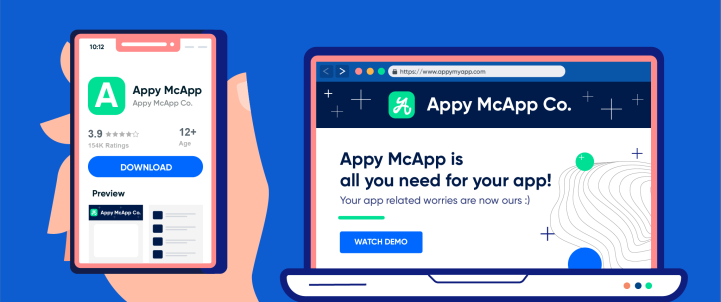As a mobile marketer with an app that’s been released in app stores and amassed a happy user base, brand identity may be the last thing on your mind.
But the truth is your brand should be something that you’re constantly working to improve no matter where you are on the journey from startup to global juggernaut.
The point of marketing is not just to attract and acquire users but to build lasting relationships with them. In exchange for your app bringing them delight, your users give you revenue, loyalty, and increased patronage.
But if you’re not creating a brand identity, you won’t have a solid foundation to build your marketing tactics, your lead generation efforts, and your customer loyalty programs.
So let’s try to understand brand and brand identity so you can actively improve it for both your company and your mobile app. Read on or jump to our infographic.
Brand Identity Definition
What is brand identity? Your brand identity is simply how you want to be perceived by your customers and the general public.
It’s the result of a conscious effort to craft the visible elements of your company: everything from your company name and logo, to your products, marketing materials, and campaigns. Each of the components listed here contributes to public perception of your company.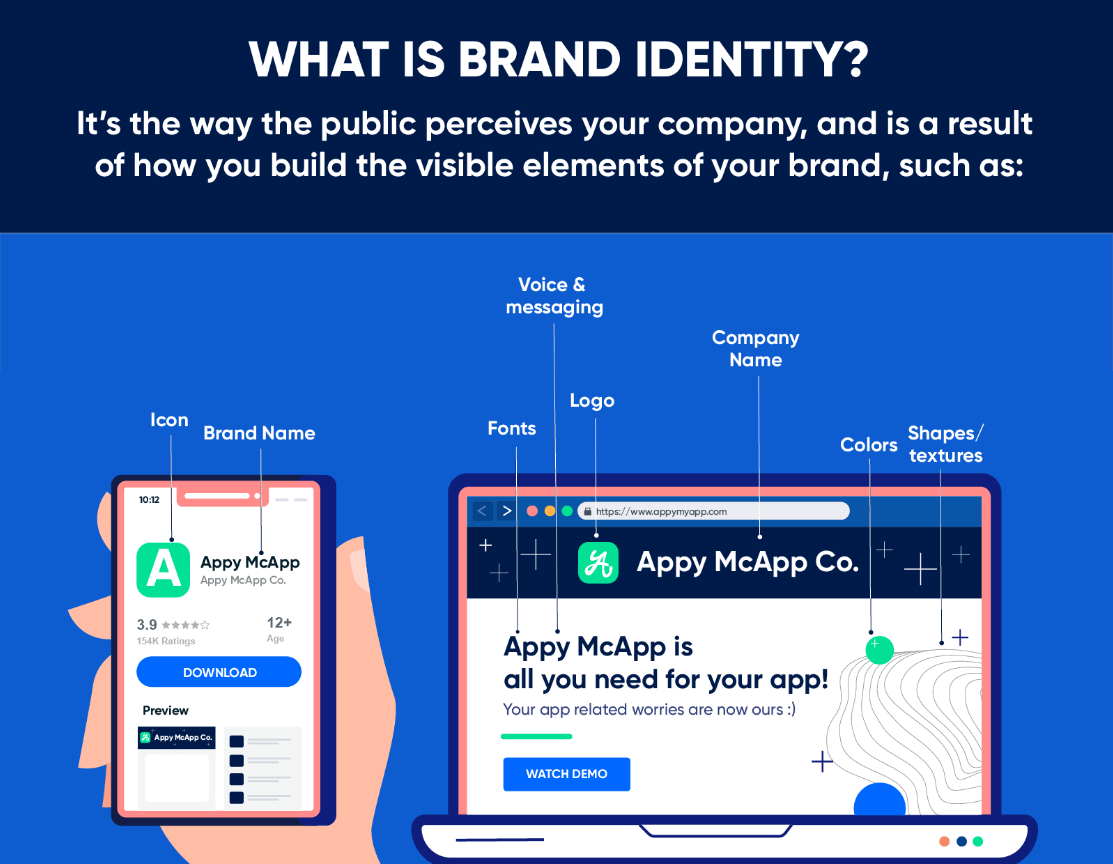
The Goal of Branding
No brand identity definition is complete without mentioning the goal of all branding efforts. And that is: to mirror who your customers want to be. When you can show customers a better life with your app and your company, then you are on the road to healthier customer retention rates.
Think Nike and how every marketing campaign leads the viewer to aspire to a healthier body and a more active lifestyle. That story wasn’t just concocted by accident, it was crafted by branding.
Brand Identity vs Brand Image, Brand, and Branding
In order to come to a better understanding of these concepts, we need to clarify and define those terms which are very similar to brand identity but which mean wholly different things.
Brand
According to the American Marketing Association, a brand is a distinctive name, term, symbol, or feature that distinguishes one company’s product or service from those of another company’s.1
Marketing guru Seth Godin adds that it is the set of expectations, memories, stories and relationships that, taken together, account for a consumer’s decision to choose one product or service over another.2
Putting those two ideas together, a brand is then a potent combination of both the tangible assets of your company (logos, colors, design) with the intangible (the public’s perception of your brand). It’s why people choose your brand and your mobile app over others.
Brand Identity & Brand Image
Some marketers equate brand image with brand identity. But there’s a clear difference between the two: one is under your control, the other isn’t.3
Brand identity is how you want your brand to be perceived. This is the ideal, the goal you’re aiming toward.
Brand image, on the other hand, is how consumers actually perceive your brand. As such it’s constantly in flux, and always out of your company’s direct control.
If you do your marketing well, these two approximate one another. But not always. Consumers may have a wholly different perception of your brand than what you originally envisioned.
This is why it’s in your brand’s best interest to control the narrative as much as you possibly can so you can build the best possible perception. Because after all, perception drives the reality.
Branding
Finally, branding is the methodical process — both the strategy and the actions — that a company engages in to differentiate itself from the competition.
Thus, your brand is a result of your branding efforts.
When you practice effective corporate branding, you’re creating a brand identity that gives customers confidence in your company.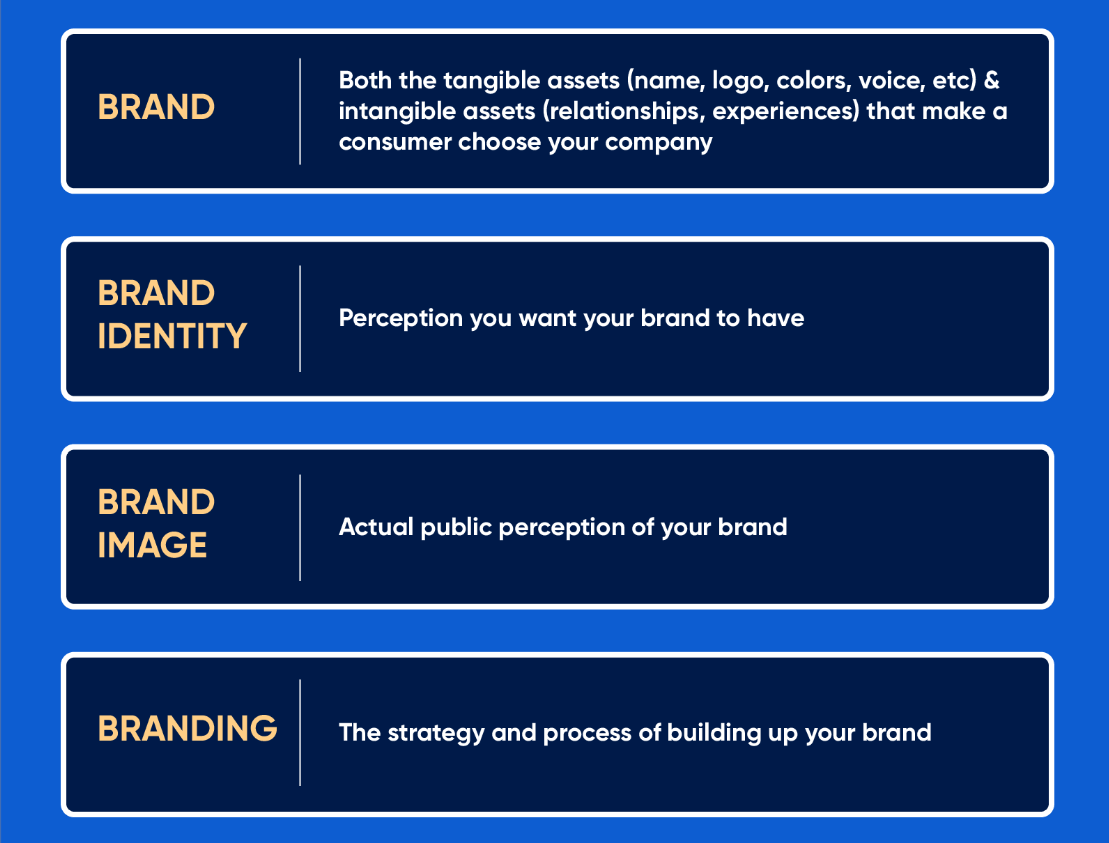
How to Create a Brand Identity
So how can a mobile brand like yours begin this lifelong quest to build up a brand identity that helps you both attract and retain customers? Well, the easiest way to begin is to use a tool called a Brand Identity Questionnaire.
Brand Identity Questionnaire
One of the tools that marketing agencies use to help clients figure all of this out is the brand identity questionnaire. It typically forces companies to take a good, hard look at themselves by answering questions such as:
- Who is your target audience?
- What is your value proposition? What problems do you solve for your clients?
- Who are your competitors? How do you differentiate yourselves from them?
- If your brand were a person, what characteristics or personality traits might describe it?
- What’s your story — both your history and the role you play in customers’ lives?
- What does your brand voice sound like? How do you communicate with customers?
Brand Decisions: Does It Contribute To Your Purpose?
Answering the brand identity questionnaire is a good start because it gets you thinking about the overarching purpose of your company — your mission and vision, your company’s reason for existing. By nailing down your purpose and goals, you can easily define who you are and who you want to reach.
Once defined, every brand identity decision you face can roll up to the overarching purpose of your brand.
Design Visual Elements According to Your Purpose
This is where design comes in and crafts all the visible components: your logo, your fonts, page templates, icons, and so on. The goal is to communicate your brand’s mission and purpose with every design.
Tips:
- Aim for your logo to be timeless and appealing even 10 years down the road, so no trendy or gimmicky fads.
- Fonts and typefaces should be simple and yet readable.
- Color palettes should match the values you want represented. Icons and graphics should do the same.
- Continue to ask: will these design elements appeal to the target audience? Do they communicate your brand’s values to people who don’t know your app? For example: if your app helps senior citizens with their taxes, will that hot pink icon get them to install? And will your tiny sans serif fonts aid them or deter them from understanding your brand better?
Some examples of mobile brands with visual aesthetics that very clearly show off their value prop as well as appeal to their target audience of users: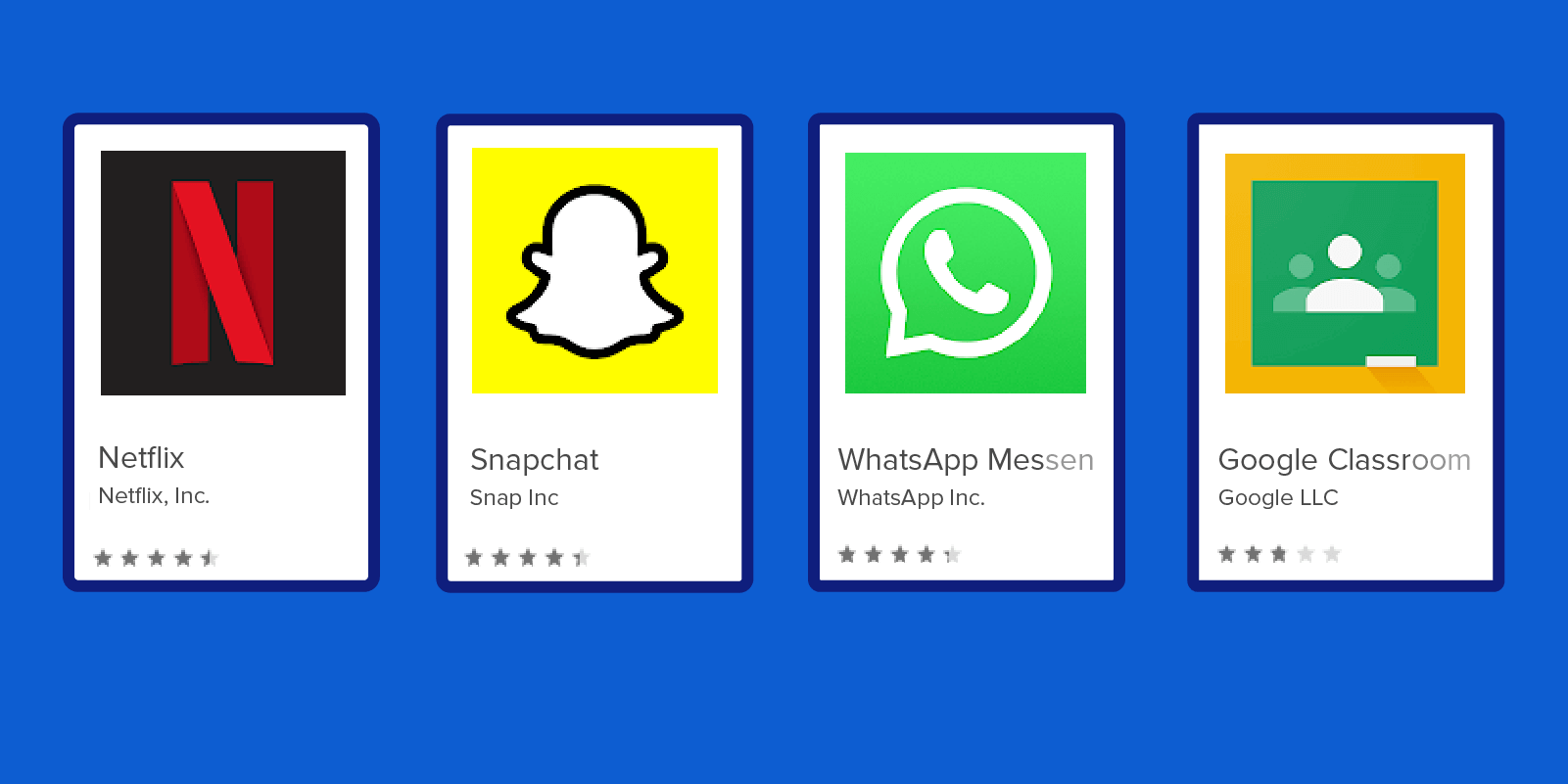
Care About Consistency
A key element to brand identity is consistency.
With every campaign you launch and every communication you send out, you’re building your brand. And if you have no clear definition of the brand identity you are aiming for, it’s far too easy to concoct messaging that’s off brand.
That’s a huge no-no.
You have to aim for familiarity. Because when your brand consistently shows up in the same manner, it becomes familiar to the consumer and trust is built. You can then turn this trust into revenue by encouraging consumers to convert into paying customers, or when upsells or cross-sells are presented.
A consistent brand identity leads to consistent sales and growth. Inconsistencies lead to the perception of instability, impermanence, or being of low quality.
There can be no trust without consistency. For better or worse, the consistency of how you’re perceived across channels and properties affects your growth. It even affects how you attract and retain users.
Use Case: Changing the Airbnb Logo
In 2014, when Airbnb revamped its logo, there was a massive furor over it. People were up in arms over how it looked like another company’s logo, resembled a paperclip, or reminded people of specific body parts.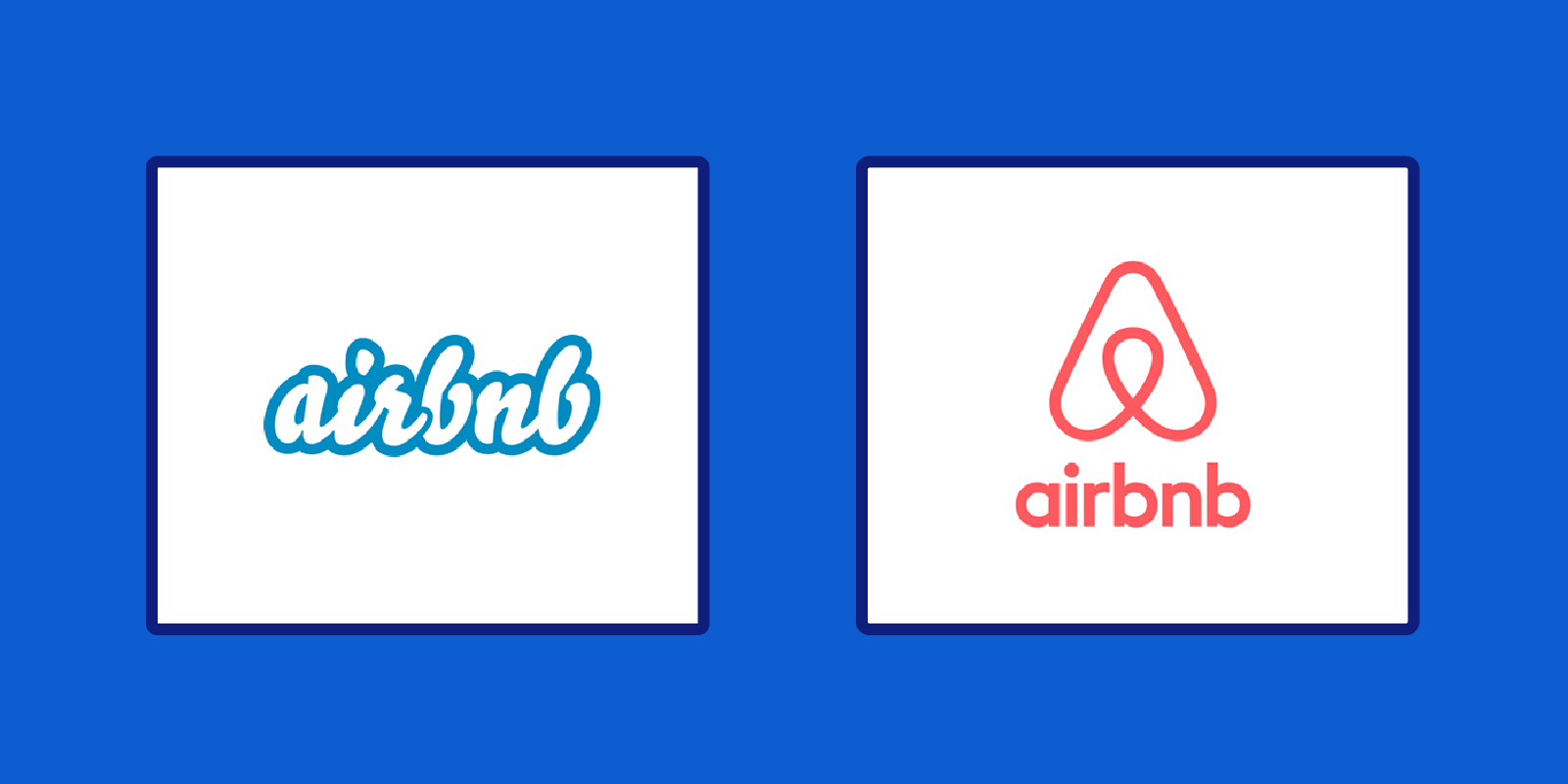
The more interesting phenomenon however is the fact that people spoke up about it at all. Consumers had formed a relationship with the Airbnb brand and felt the new logo was suddenly inconsistent with what they were used to.
But at the same time, their brand had evolved and their logo was created to show that change. As your own brand inevitably undergoes change, look out for opportunities to evolve and grow your brand identity.
Consistency in Design, Voice, and Values
If the logo on your website isn’t the same as the one on Twitter, Facebook, and your app store page, potential customers might not be able to distinguish you from the horde of other competitors. What’s more, even if they do find you, they’ll find it really difficult to trust you.
If the “voice” used in your social media posts does not match the corporate voice on your website and app store pages, then fix it. That disconnect between your official website and your social handles will likely dissuade customers from fully embracing your brand.
If your corporate values say one thing but your employees do something else, guess what happens to the trust you’ve built up with customers? Down the drain.
Consistency doesn’t just mean staying true to brand guidelines, it also means living out your mission/vision as a company in everything you do.
Draft Your Brand Style Guide
The easiest way to ensure that everyone in the company uses your brand identity consistently is to draft a set of guidelines for the usage of all brand elements. This brand style guide should serve as the go-to reference on properly presenting your brand to the world. Make it easy to distribute to employees across the globe as well as to partners and agencies.
Brand Identity: Your Turn
In the effort to build long-term relationships with your mobile app users, you’ve got to take care of your brand. Every visible element from logo to app icon to fonts and colors must tell a story and represent your brand faithfully. Every interaction with customers should be consistent with your brand’s mission/vision.
If you need to learn how to create a brand identity successfully, then some of the best lessons lie with the world’s top brands. After all, their recognizable logos didn’t just magically appear; they were built carefully through the years. Learn from them and take their steps to heart.
Finally, no brand identity definition would be complete without mentioning consistency. Be consistent in how you use your brand elements, in how you communicate with the public, in how you pursue your company’s purpose. In the end, all this activity will help you create a brand that not only attracts but also retains customers.

The Experience Optimization Pocket Guide
Shivkumar M 
Head Product Launches, Adoption, & Evangelism.Expert in cross channel marketing strategies & platforms.
Free Customer Engagement Guides
Join our newsletter for actionable tips and proven strategies to grow your business and engage your customers.














































